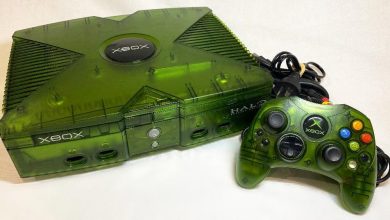The Gaming Console: A Gateway to Interactive Entertainment
A Gateway to Interactive Entertainment

Introduction:
The gaming console stands as a cornerstone of modern entertainment, offering players a gateway to immersive worlds, thrilling adventures, and unforgettable experiences. From the humble beginnings of Pong to the cutting-edge technology of today’s consoles, this article explores the evolution, impact, and enduring popularity of gaming consoles in the world of interactive entertainment.
Origins and Early Innovations:
The concept of the gaming console traces its roots back to the mid-20th century, with the emergence of arcade machines and home entertainment systems. The Magnavox Odyssey, released in 1972, is widely regarded as the first commercial gaming console, featuring simple games like Pong and Table Tennis. Subsequent consoles, such as the Atari 2600 and Intellivision, introduced innovations like interchangeable cartridges, improved graphics, and more sophisticated gameplay experiences, laying the foundation for the modern gaming console industry.
Gaming Origins and Early Innovations: Tracing the Roots of Interactive Entertainment
Introduction:
The history of gaming is a rich tapestry that spans centuries, evolving from simple pastimes to the multi-billion-dollar industry we know today. This article delves into the origins and early innovations of gaming, tracing its roots from ancient civilizations to the emergence of modern electronic entertainment.
Ancient Beginnings:
The concept of gaming has ancient origins, with evidence of early games dating back thousands of years. Ancient civilizations, such as the Egyptians, Greeks, and Romans, engaged in various forms of gaming, including board games like Senet and Mancala, as well as dice games and contests of skill and chance. These games served as sources of entertainment, social interaction, and even religious or ritualistic practices, highlighting the universal appeal of gaming throughout human history.
Medieval and Renaissance Games:
During the Middle Ages and the Renaissance, gaming continued to evolve, with new games and pastimes emerging across Europe and beyond. Chess, originating in India around the 6th century, became a popular game of strategy and intellect among medieval nobility, while games like backgammon and cards spread throughout Europe via trade routes and cultural exchanges. These games reflected the social, political, and cultural dynamics of the time, providing people with opportunities for leisure and diversion amidst the challenges of daily life.
The Emergence of Modern Gaming:
The 19th and early 20th centuries witnessed significant advancements in gaming technology and culture, laying the groundwork for the emergence of modern electronic gaming. The invention of mechanical toys and automata, such as the mechanical Turk and early pinball machines, introduced new forms of interactive entertainment that captivated audiences with their ingenuity and novelty. Meanwhile, tabletop games like war games, miniatures, and role-playing games (RPGs) gained popularity among enthusiasts, foreshadowing the immersive and social nature of modern gaming experiences.
The Birth of Electronic Gaming:
The advent of electronic technology in the mid-20th century heralded a new era of gaming innovation, marked by the invention of the first electronic games and devices. In 1958, physicist William Higinbotham created “Tennis for Two,” a rudimentary tennis simulation game displayed on an oscilloscope, which is considered one of the earliest examples of electronic gaming. Subsequently, in 1962, MIT students developed “Spacewar!,” a space combat game played on a PDP-1 computer, which laid the foundation for multiplayer gaming and interactive entertainment.
The Rise of Arcade Games and Home Consoles:
The 1970s witnessed the rise of arcade games and home consoles, which brought electronic gaming into the mainstream consciousness. Pioneering arcade games like Pong, Space Invaders, and Pac-Man captivated players with their simple yet addictive gameplay and colorful graphics. Meanwhile, the introduction of home consoles like the Magnavox Odyssey and Atari 2600 brought the arcade experience into the living room, allowing players to enjoy arcade-style gaming from the comfort of their homes. These early innovations laid the groundwork for the explosive growth of the video game industry in the decades to come.
Innovations in Graphics and Gameplay:
Throughout the 1980s and 1990s, gaming continued to evolve with advancements in graphics, sound, and gameplay. The introduction of 8-bit and 16-bit home consoles, such as the Nintendo Entertainment System (NES) and the Sega Genesis, revolutionized the gaming landscape with iconic franchises like Super Mario Bros., The Legend of Zelda, and Sonic the Hedgehog. Meanwhile, the transition to 3D graphics in the fifth generation of consoles (e.g., PlayStation, Nintendo 64) paved the way for immersive gaming experiences and cinematic storytelling, further expanding the possibilities of interactive entertainment.
The Advent of Online Gaming:
The late 20th century saw the emergence of online gaming, facilitated by the proliferation of personal computers and the internet. Multiplayer online games like MUDs (Multi-User Dungeons) and early MMOs (Massively Multiplayer Online games) introduced players to virtual worlds where they could interact, cooperate, and compete with others in real-time. Meanwhile, the advent of online gaming services and platforms, such as Xbox Live and PlayStation Network, brought console gaming online, enabling players to connect and play with friends and strangers from around the world.
Conclusion:
The origins and early innovations of gaming are a testament to the enduring human fascination with play, competition, and interaction. From ancient board games to modern electronic entertainment, gaming has evolved and adapted to reflect the technological, social, and cultural dynamics of each era. As we look to the future, the legacy of gaming’s origins continues to inspire creativity, innovation, and exploration, shaping the ever-evolving landscape of interactive entertainment for generations to come.
The Rise of Home Consoles:
The 1980s and 1990s saw the rise of home consoles as a dominant force in the gaming market. Nintendo’s NES (Nintendo Entertainment System), released in 1985, revolutionized the industry with iconic franchises like Super Mario Bros., The Legend of Zelda, and Metroid. Sega’s Genesis/Mega Drive, released in 1988, introduced fierce competition with titles like Sonic the Hedgehog and Streets of Rage. These consoles popularized gaming as a form of home entertainment, captivating audiences with memorable characters, engaging gameplay, and groundbreaking technology.
The Rise of Home Consoles: Revolutionizing Gaming in the Living Room
Introduction:
The rise of home consoles marked a pivotal moment in the history of gaming, bringing the arcade experience into the living room and transforming interactive entertainment into a household pastime. This article delves into the origins, evolution, and impact of home consoles, from the early pioneers to the modern gaming giants that dominate the industry today.
Origins of Home Consoles:
The concept of home consoles emerged in the 1970s as an extension of arcade gaming, offering players the convenience of playing their favorite games without leaving the comfort of their homes. The Magnavox Odyssey, released in 1972, is widely regarded as the first commercial home console, featuring simple games like Pong and Table Tennis. Subsequent consoles, such as the Atari 2600 and Intellivision, introduced interchangeable cartridges, improved graphics, and more sophisticated gameplay experiences, laying the foundation for the modern gaming console industry.
Atari and the Golden Age of Home Gaming:
The Atari 2600, released in 1977, became a cultural phenomenon and symbolized the golden age of home gaming. With its iconic wood-grain design and library of classic games like Space Invaders, Pac-Man, and Pitfall!, the Atari 2600 introduced millions of players to the joys of gaming in the comfort of their living rooms. The success of the Atari 2600 paved the way for other home console manufacturers to enter the market, fueling a period of innovation and competition that drove the industry forward.
Nintendo Entertainment System (NES) and the Console Renaissance:
The mid-1980s witnessed a resurgence of home gaming with the introduction of the Nintendo Entertainment System (NES). Released in 1985, the NES revitalized the gaming industry after the video game crash of 1983, introducing iconic franchises like Super Mario Bros., The Legend of Zelda, and Metroid. With its sleek design, innovative controller, and robust library of games, the NES solidified Nintendo’s position as a dominant force in the gaming market and set the stage for the console renaissance of the late 1980s and early 1990s.
Sega Genesis and Console Wars:
The Sega Genesis, released in 1988, emerged as a formidable competitor to the NES, sparking a fierce rivalry known as the console wars. With its blast processing technology and iconic mascot, Sonic the Hedgehog, the Genesis challenged Nintendo’s dominance and captured the hearts of gamers worldwide. The rivalry between Nintendo and Sega fueled innovation and creativity, leading to the development of groundbreaking games, peripherals, and marketing campaigns that captivated audiences and propelled the gaming industry to new heights.
Advancements in Technology and Gameplay:
Throughout the 1990s and early 2000s, home consoles continued to evolve with advancements in technology and gameplay. The transition to 16-bit and 32-bit consoles, such as the Super Nintendo Entertainment System (SNES) and Sony PlayStation, brought about a new era of gaming with enhanced graphics, sound, and gameplay mechanics. Meanwhile, the introduction of CD-ROMs, 3D graphics, and online multiplayer capabilities expanded the possibilities of interactive entertainment, paving the way for iconic franchises like Final Fantasy, Resident Evil, and Metal Gear Solid.
Modern Consoles and the Digital Age:
In the 21st century, home consoles have evolved into sophisticated multimedia devices that offer a wide range of entertainment experiences beyond gaming. Consoles like the Xbox Series X|S, PlayStation 5, and Nintendo Switch boast powerful hardware, high-definition graphics, and immersive gameplay experiences that rival those of high-end gaming PCs. Moreover, the integration of streaming services, social media, and digital distribution platforms has transformed consoles into all-in-one entertainment hubs that cater to a diverse audience of gamers and non-gamers alike.
Conclusion:
The rise of home consoles has transformed gaming from a niche hobby into a mainstream form of entertainment that is enjoyed by millions of people around the world. From the early pioneers like the Magnavox Odyssey and Atari 2600 to the modern gaming giants like the PlayStation and Xbox, home consoles have played a pivotal role in shaping the evolution of interactive entertainment. As technology continues to advance and gaming culture continues to evolve, the legacy of home consoles remains a testament to the enduring appeal of gaming in the living room and the profound impact it has had on our lives.
Advancements in Technology:
Advancements in technology have been instrumental in shaping the evolution of gaming consoles over the years. Each new generation of consoles has brought significant improvements in graphics, processing power, and features, pushing the boundaries of what is possible in interactive entertainment. From the transition to 3D graphics in the fifth generation (e.g., Sony PlayStation, Nintendo 64) to the introduction of online multiplayer and high-definition graphics in the seventh generation (e.g., Xbox 360, PlayStation 3), gaming consoles have continually evolved to deliver more immersive and lifelike gaming experiences.
Innovative Features and Experiences:
In addition to technological advancements, gaming consoles have introduced innovative features and experiences that have enriched the gaming landscape. Motion control technology, popularized by the Nintendo Wii and PlayStation Move, offered new ways to interact with games through gestures and body movements. The integration of multimedia features, such as streaming services, Blu-ray players, and social media integration, transformed consoles into all-in-one entertainment hubs, catering to a broader audience beyond traditional gamers. Furthermore, virtual reality (VR) and augmented reality (AR) technologies, exemplified by devices like PlayStation VR and Microsoft HoloLens, promise to revolutionize gaming experiences by immersing players in virtual worlds and blending digital content with the real world.
Cultural Impact and Community:
Gaming consoles have had a profound cultural impact, shaping the way people play, connect, and socialize. Consoles have fostered vibrant communities of players, from casual gamers to competitive esports enthusiasts, who come together to share their passion for gaming. Multiplayer gaming experiences, facilitated by online services like Xbox Live and PlayStation Network, have connected players from around the world, forging friendships, rivalries, and memories that transcend geographical boundaries. Moreover, gaming consoles have become cultural icons, influencing fashion, music, and popular media, and inspiring a new generation of creators and innovators.
The Future of Gaming Consoles:
As technology continues to evolve, the future of gaming consoles promises even greater innovation and excitement. The upcoming generation of consoles, exemplified by the PlayStation 5 and Xbox Series X|S, boasts features such as ray tracing, faster load times, and immersive haptic feedback, raising the bar for gaming experiences. Additionally, cloud gaming services and subscription-based models are expanding access to games and blurring the lines between console gaming and other platforms. With the advent of new technologies like artificial intelligence, virtual reality, and cloud computing, the possibilities for gaming consoles are limitless, offering players unprecedented opportunities to explore, create, and connect in the world of interactive entertainment.
Conclusion:
The gaming console has evolved from its humble beginnings to become a cornerstone of modern entertainment, offering players a diverse array of experiences and opportunities to engage with interactive content. From the innovation of early pioneers to the technological marvels of today’s consoles, the gaming console continues to captivate audiences, inspire creativity, and shape the cultural landscape of gaming. As we look to the future, the gaming console remains a beacon of innovation and excitement, promising endless possibilities for players around the world.
Introduction to gaming consoles
Gaming consoles have revolutionized the way we play video games. These devices bring immersive gaming experiences right into our living rooms, offering stunning graphics, realistic gameplay, and a wide range of titles to choose from. Whether you’re a casual gamer or a hardcore enthusiast, finding the right gaming console can make all the difference in your gaming adventures.
Factors to consider when choosing a gaming console
When it comes to choosing a gaming console, there are several factors to consider. One of the most important is the available game library. Different consoles have exclusive titles, so if there’s a specific game you’re interested in, make sure it’s available on the console you’re considering. Additionally, consider the performance capabilities of the console. Some consoles offer more powerful hardware, resulting in better graphics and smoother gameplay. It’s also important to consider your budget and the overall cost of owning a console, including the price of games and accessories. Another factor to consider is the online capabilities of the console. Online gaming has become a popular feature of modern consoles, allowing players to connect and compete with others from around the world. If online gaming is important to you, make sure the console you choose has a robust online network and supports multiplayer options.
Exploring the top gaming consoles on the market
There are several top gaming consoles on the market today, each offering unique features and gaming experiences. Let’s take a closer look at some of the best options available.
Xbox Series X: The powerhouse for high-performance gaming
The Xbox Series X is Microsoft’s flagship gaming console, designed to deliver the ultimate gaming experience. With its powerful hardware, including a custom AMD processor and advanced graphics capabilities, the Series X offers stunning visuals and seamless gameplay. The console supports 4K resolution and up to 120 frames per second, ensuring smooth and immersive gaming. In addition to its impressive performance, the Xbox Series X also boasts an extensive game library, including exclusive titles such as “Halo Infinite” and “Forza Horizon 5.” The console also supports backward compatibility, allowing you to play a wide range of Xbox One, Xbox 360, and original Xbox games.
PlayStation 5: The next-gen console with stunning graphics and immersive gameplay
Sony’s PlayStation 5 is another top contender in the gaming console market. With its cutting-edge technology and innovative features, the PS5 offers a truly next-generation gaming experience. The console features a custom AMD processor, ray-tracing capabilities, and a lightning-fast SSD, resulting in breathtaking visuals and incredibly fast load times. The PlayStation 5 also boasts an impressive lineup of exclusive games, including “Spider-Man: Miles Morales” and “Demon’s Souls.” The console supports 4K resolution and up to 120 frames per second, providing a smooth and immersive gaming experience.
Nintendo Switch: The versatile console for gaming on the go
If you’re looking for a gaming console that offers versatility and portability, the Nintendo Switch is the perfect choice. This unique console can be played both on a TV and in handheld mode, allowing you to enjoy your favorite games wherever you go. The Switch features a vibrant display and detachable Joy-Con controllers, providing a fun and interactive gaming experience. The Nintendo Switch offers a diverse library of games, including beloved franchises such as “Super Mario,” “The Legend of Zelda,” and “Animal Crossing.” The console also supports multiplayer gaming, both online and with local multiplayer options. With its unique features and family-friendly titles, the Nintendo Switch is a great choice for gamers of all ages.
PC gaming: The ultimate gaming experience with endless customization options
While gaming consoles offer incredible experiences, PC gaming takes it to a whole new level. With a gaming PC, you have access to a vast library of games, including exclusive titles and indie gems. PC gaming also allows for endless customization options, from upgrading hardware components to modding games to your heart’s content. Gaming on a PC offers unparalleled performance, with the ability to achieve high frame rates and ultra-high resolutions. With a powerful gaming rig, you can enjoy games in 4K resolution, with ray tracing and other advanced graphical features. Additionally, PC gaming offers a wide range of input options, from keyboards and mice to gamepads and joysticks.
Gaming console accessories for an enhanced gaming experience
To further enhance your gaming experience, there are a variety of accessories available for gaming consoles. These accessories can improve comfort, convenience, and gameplay immersion. Let’s take a look at some popular gaming console accessories. One essential accessory for console gaming is a comfortable gaming headset. A good headset can provide immersive audio, allowing you to hear every detail in your games. Additionally, many headsets offer built-in microphones, making it easy to communicate with other players online. Another popular accessory is a gaming controller charger. With a charger, you can keep your controllers powered up and ready to go at all times. This eliminates the need to constantly replace batteries or deal with tangled charging cables. Other accessories to consider include gaming chairs for added comfort during long gaming sessions, external hard drives to expand your console’s storage capacity, and gaming capture cards to record and stream your gameplay.
Online gaming and multiplayer options
One of the biggest advantages of modern gaming consoles is the ability to play games online and connect with other players. Online gaming has become incredibly popular, offering a social and competitive aspect to gaming. Most consoles have their own online network, where players can create profiles, join multiplayer matches, and communicate with friends.In addition to online multiplayer, many consoles also offer local multiplayer options. This allows you to play games with friends and family in the same room, using multiple controllers or even sharing a single controller.
Conclusion: Which gaming console is right for you?
Choosing the right gaming console ultimately depends on your personal preferences and gaming needs. If you prioritize high-performance gaming and stunning graphics, the Xbox Series X or PlayStation 5 may be the best options for you. If versatility and portability are important, the Nintendo Switch is worth considering. And if you’re looking for the ultimate gaming experience with endless customization options, PC gaming might be the way to go. Consider your budget, the available game library, and the specific features that matter most to you. With careful consideration, you can find the perfect gaming console to embark on unforgettable gaming adventures.
Call to Action
Ready to take your gaming experience to the next level? Explore the top gaming consoles mentioned in this guide and find the perfect one for you. Whether you choose the Xbox Series X, PlayStation 5, Nintendo Switch, or PC gaming, get ready for an unforgettable gaming experience. Start your gaming journey today!











